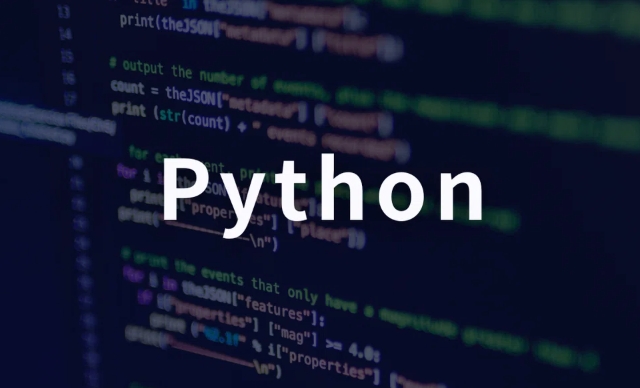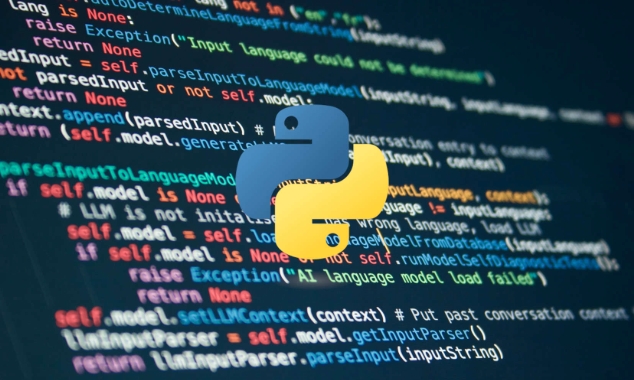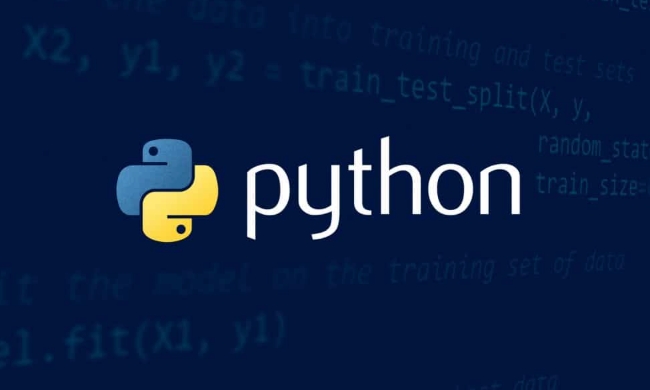Data versioning is crucial, especially in machine learning and data analytics projects. 1. Use DVC to manage data versions, which enables efficient tracking and reproduction by recording data hashing instead of storing complete files; 2. Simple version management through naming specifications and metadata files (such as metadata.json), recording data sources, processing script versions and hash values; 3. Corresponding to the code version, such as specifying the current data version in the configuration file or recording data hashing in the log, so as to ensure that the experimental results are traceable and reproducible.

When using Python to do projects, data version management is often ignored, but in fact it is as important as code version management. Especially when you are doing machine learning, data cleaning or analysis projects, the data changes, and the results may all change. At this time, if you don’t know which version of data you are using, it will easily lead to problems.

The following methods can help you make the data version more clear and controllable.
Why do data also require version control?
You may have already managed code with Git, but data files are often much larger than code. Putting them directly into Git will slow down and even make the repository bloated. Moreover, the data changes are not changed line by line like the code, it is updated as a whole. For example, if you export a CSV file and add a few columns next time, if you don’t record it, it is difficult to know which data was used.

Therefore, the goal of data versioning is:
- Can trace what data is used for each experiment/run
- Reproduce historical results
- Avoid the embarrassment of "I remember changing the data but I don't know what I changed"
Use DVC for data version control
DVC (Data Version Control) is a version control tool specially designed for data, which is very convenient to use with Git. It does not actually store the data into Git, but records the hash value of the data and stores the real data in local or remote storage.

The basic usage is as follows:
- Install:
pip install dvc - Initialization:
dvc init - Add data directory to DVC management:
dvc add data/ - Commit Git:
git add data.dvcand thengit commit
In this way, every time the data changes, DVC will generate a new hash and record it in Git. You can switch the data version like you would switch the code branch.
Record data versions with file names or metadata
If you don't want to introduce additional tools, you can also use naming standard metadata files to perform simple version control.
for example:
- The data file name is taken with the date or version number:
data_v1.csv,data_20241010.csv - Every time you export data, write a
metadata.jsonto record:- Source of data
- Process script version
- Generation time
- Data hash value (such as MD5)
Although this method is simple, as long as you persist in doing it, you can avoid a lot of confusion.
Correlate the data version and the code version
Ideally, you should be able to use a Git commit to know which version of the data you used at that time. for example:
- Add a
config.pyor.envfile to the code to record the current data version path - Or print the data hash at the beginning of the training script and save it to the log
In this way, if you look back at the results of a certain run, you will know which data it is based on.
Basically that's it. The data version is difficult or not, but it is easy to ignore. Using DVC is a tricky approach, but if it is just a small project, it can be handled by naming specifications and metadata. The key is: don't let the data change become a black box .
The above is the detailed content of Data Versioning for Python Projects. For more information, please follow other related articles on the PHP Chinese website!

Hot AI Tools

Undress AI Tool
Undress images for free

Undresser.AI Undress
AI-powered app for creating realistic nude photos

AI Clothes Remover
Online AI tool for removing clothes from photos.

Clothoff.io
AI clothes remover

Video Face Swap
Swap faces in any video effortlessly with our completely free AI face swap tool!

Hot Article

Hot Tools

Notepad++7.3.1
Easy-to-use and free code editor

SublimeText3 Chinese version
Chinese version, very easy to use

Zend Studio 13.0.1
Powerful PHP integrated development environment

Dreamweaver CS6
Visual web development tools

SublimeText3 Mac version
God-level code editing software (SublimeText3)
 How to handle API authentication in Python
Jul 13, 2025 am 02:22 AM
How to handle API authentication in Python
Jul 13, 2025 am 02:22 AM
The key to dealing with API authentication is to understand and use the authentication method correctly. 1. APIKey is the simplest authentication method, usually placed in the request header or URL parameters; 2. BasicAuth uses username and password for Base64 encoding transmission, which is suitable for internal systems; 3. OAuth2 needs to obtain the token first through client_id and client_secret, and then bring the BearerToken in the request header; 4. In order to deal with the token expiration, the token management class can be encapsulated and automatically refreshed the token; in short, selecting the appropriate method according to the document and safely storing the key information is the key.
 Explain Python assertions.
Jul 07, 2025 am 12:14 AM
Explain Python assertions.
Jul 07, 2025 am 12:14 AM
Assert is an assertion tool used in Python for debugging, and throws an AssertionError when the condition is not met. Its syntax is assert condition plus optional error information, which is suitable for internal logic verification such as parameter checking, status confirmation, etc., but cannot be used for security or user input checking, and should be used in conjunction with clear prompt information. It is only available for auxiliary debugging in the development stage rather than substituting exception handling.
 What are python iterators?
Jul 08, 2025 am 02:56 AM
What are python iterators?
Jul 08, 2025 am 02:56 AM
InPython,iteratorsareobjectsthatallowloopingthroughcollectionsbyimplementing__iter__()and__next__().1)Iteratorsworkviatheiteratorprotocol,using__iter__()toreturntheiteratorand__next__()toretrievethenextitemuntilStopIterationisraised.2)Aniterable(like
 What are Python type hints?
Jul 07, 2025 am 02:55 AM
What are Python type hints?
Jul 07, 2025 am 02:55 AM
TypehintsinPythonsolvetheproblemofambiguityandpotentialbugsindynamicallytypedcodebyallowingdeveloperstospecifyexpectedtypes.Theyenhancereadability,enableearlybugdetection,andimprovetoolingsupport.Typehintsareaddedusingacolon(:)forvariablesandparamete
 How to iterate over two lists at once Python
Jul 09, 2025 am 01:13 AM
How to iterate over two lists at once Python
Jul 09, 2025 am 01:13 AM
A common method to traverse two lists simultaneously in Python is to use the zip() function, which will pair multiple lists in order and be the shortest; if the list length is inconsistent, you can use itertools.zip_longest() to be the longest and fill in the missing values; combined with enumerate(), you can get the index at the same time. 1.zip() is concise and practical, suitable for paired data iteration; 2.zip_longest() can fill in the default value when dealing with inconsistent lengths; 3.enumerate(zip()) can obtain indexes during traversal, meeting the needs of a variety of complex scenarios.
 Python FastAPI tutorial
Jul 12, 2025 am 02:42 AM
Python FastAPI tutorial
Jul 12, 2025 am 02:42 AM
To create modern and efficient APIs using Python, FastAPI is recommended; it is based on standard Python type prompts and can automatically generate documents, with excellent performance. After installing FastAPI and ASGI server uvicorn, you can write interface code. By defining routes, writing processing functions, and returning data, APIs can be quickly built. FastAPI supports a variety of HTTP methods and provides automatically generated SwaggerUI and ReDoc documentation systems. URL parameters can be captured through path definition, while query parameters can be implemented by setting default values ??for function parameters. The rational use of Pydantic models can help improve development efficiency and accuracy.
 How to test an API with Python
Jul 12, 2025 am 02:47 AM
How to test an API with Python
Jul 12, 2025 am 02:47 AM
To test the API, you need to use Python's Requests library. The steps are to install the library, send requests, verify responses, set timeouts and retry. First, install the library through pipinstallrequests; then use requests.get() or requests.post() and other methods to send GET or POST requests; then check response.status_code and response.json() to ensure that the return result is in compliance with expectations; finally, add timeout parameters to set the timeout time, and combine the retrying library to achieve automatic retry to enhance stability.
 Setting Up and Using Python Virtual Environments
Jul 06, 2025 am 02:56 AM
Setting Up and Using Python Virtual Environments
Jul 06, 2025 am 02:56 AM
A virtual environment can isolate the dependencies of different projects. Created using Python's own venv module, the command is python-mvenvenv; activation method: Windows uses env\Scripts\activate, macOS/Linux uses sourceenv/bin/activate; installation package uses pipinstall, use pipfreeze>requirements.txt to generate requirements files, and use pipinstall-rrequirements.txt to restore the environment; precautions include not submitting to Git, reactivate each time the new terminal is opened, and automatic identification and switching can be used by IDE.






